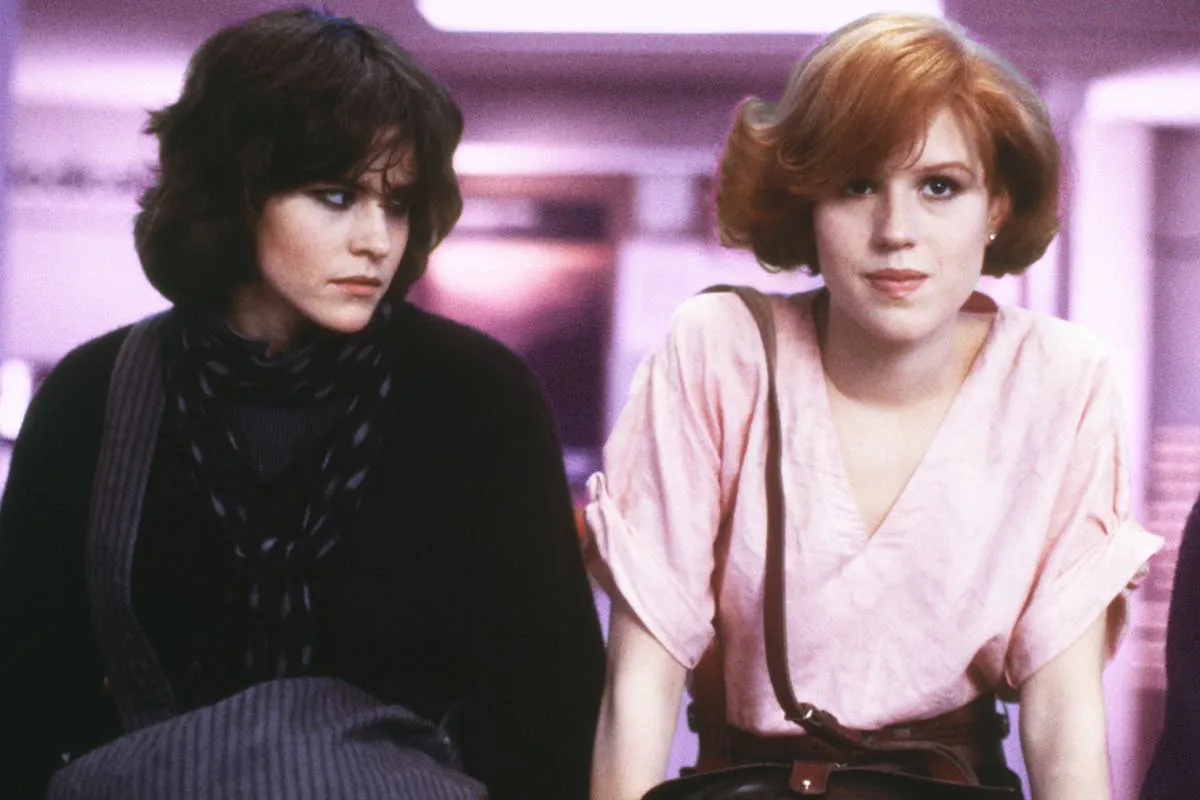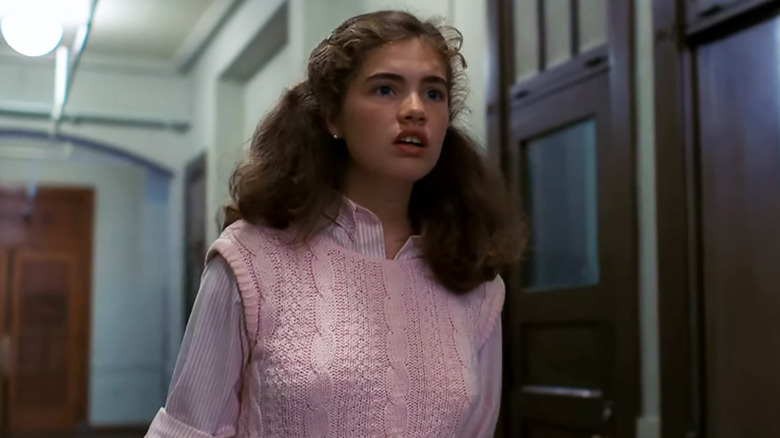"It's kind of a double-edged sword, isn't it? If you say you haven't, you're a prude. If you say you have, you're a slut. It's a trap. You want to, but you can't. And when you did, you wish you hadn't." Allison (Aly Sheedy), The Breakfast Club, 1985 |
| Allison and Claire, The Breakfast Club, 1985 |
In film, we see several stereotypes related to women and sexuality. One example is Claire in The Breakfast Club. Although she is clearly uncomfortable with conversations about sex, the other characters push her with questions about her sexual history (or lack of sexual experience). The other female character, Allison, explains the dilemma "good girls" face: if you don't have sex, you're considered an uptight prude, but if you do, you're considered a whore. This "good girl" trope is often used in horror movies, where the sole survivor (the Final Girl) is either a virgin or a non-sexualized, chaste woman who keeps her clothes on and avoids drugs and alcohol. Promiscuous female characters, and those who behave badly by drinking or doing drugs, are the women who become victims of the antagonist.
 |
| Virginal "Final Girl" Nancy Thompson (Heather Langenkamp) in A Nightmare on Elm Street (1984) |
Many of our media representations of "good girls" are also tied to race. In a 2014 article for Rewire, Erika L. Sanchez asserts that the "good girl" image frequently seen in pop music is almost exclusively white: for instance, stars such as Debbie Gibson, Britney Spears, Miley Cyrus, and Taylor Swift. While several of these artists have since worked to shed the "good girl" image, Sanchez points out that you rarely see a black artist marked this way. Like many scholars of intersectional feminism, Sanchez notes that black women have been stereotyped as dangerous, sexually promiscuous, and deviant, whereas white, middle-class young women can be marketed as sexy, but still virginal in a way that is appealing to the male gaze. One exception to this is Whitney Houston, who was often marketed with a "good girl" image by the media and her label in her early career.
 |
| Whitney Houston as a young "good girl." |
References
A Nightmare on Elm Street (image). 1984. Accessed at https://www.slashfilm.com/985113/the-scariest-scenes-in-a-nightmare-on-elm-street-movies/
Sanchez, Erika L. "Pop Music's 'Good Girl' Complex." Rewire News Group, February 6, 2014. https://rewirenewsgroup.com/2014/02/06/pop-musics-good-girls-complex/
The Breakfast Club (image), 1985. Accessed at https://filmdaze.substack.com/p/anti-queerness-and-the-pinkification
Whitney Houston. Accessed at https://www.theguardian.com/music/gallery/2012/feb/12/whitney-houston-in-pictures



Comments
Post a Comment